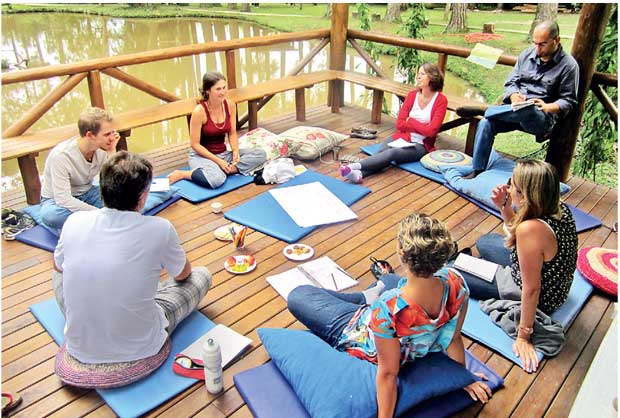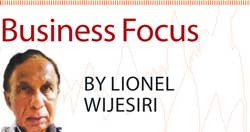22 May 2017 - {{hitsCtrl.values.hits}}

 Most leadership failure is the result of poor self-leadership. Personal leadership begins with the recognition that unless you lead yourself, you cannot lead others. It is a commitment to take the opportunity to create, design and live a life of meaning and purpose.
Most leadership failure is the result of poor self-leadership. Personal leadership begins with the recognition that unless you lead yourself, you cannot lead others. It is a commitment to take the opportunity to create, design and live a life of meaning and purpose.
There are three key dimensions of leading yourself:
1. Head vs. heart
We cannot lead with our head while we follow our heart? It takes courage to lead from the heart. Heart embraces what energizes people, what carries them through adversity, what drives them to win. Your head capabilities are rational, logical and ordered, using many managerial skills and tools.
Blending your head and heart is essential to great leadership. When confronted with a difficult decision, especially one involving an ethical dilemma, the leader will ask if the choice being considered is: (1) logical, ‘smart’, with the proper risk/reward ratio (head), (2) consistent with your personal values and the values you share with colleagues (heart), (3) something your conscience can live with, even if the choice becomes known to the world (heart) and (4) serves your stakeholders, not your ego (heart).
When your head and heart signal different directions, following your heart is wise.
2. Leading with purpose
Purpose is the great untapped reservoir that leaders can tap into to unleash the potential of their organisation. Successful organisations need leaders who know themselves first; have the inner compass that points them in the right direction. Many leaders never take the time to do so. Take time to reflect on what you want to do, why you want to do it and how you will do it.
And a leader’s purpose serves as a lodestar by pointing people in the proper direction. It gives rise to (1) vision –where an organisation is headed, (2) mission – what the organisation does and (3) values – what holds the organisation together.
Leaders use purpose to rally people together for a common cause.
3. Power of devotion 
There is just no substitute for hard work. Almost all very successful people work harder than most people can ever imagine. Even the leading athletes are known for waking up early and working toward a goal while other people are still in bed and staying later than everyone else too.
The devotion begins with right effort – without effort, nothing can be achieved; right mindfulness – to actively observe and guide our minds towards our journey and right concentration – concentration on wholesome thoughts and actions.
As the late Stephen Covey so eloquently stated, “personal leadership is not a singular experience. It is, rather, the ongoing process of keeping your vision and values before you and aligning your life to be congruent with those most important things.”
Johari Window
The Johari Window is a communication model that is used to improve understanding between individuals. The word ‘Johari’ is taken from the names of Joseph Luft and Harry Ingham, who developed the model in 1955.
There are two key ideas behind the tool:
(1) That you can build trust with others by disclosing information about yourself.
(2) That, with the help of feedback from others, you can learn about yourself and come to terms with personal issues.
By explaining the idea of the Johari Window, you can help the team members to understand the value of self-disclosure and you can encourage them to give and accept constructive feedback. Done sensitively, this can help people build better, more trusting relationships with one another, solve issues and work more effectively as a team.
The Johari Window is shown as a four-quadrant grid, which you can see in the diagram elsewhere.
1. Open Area (Quadrant 1)
This quadrant represents the things that you know about yourself and the things that others know about you. This includes your behaviour, knowledge, skills, attitudes and ‘public’ history.
2. Blind Area (Quadrant 2)
This quadrant represents things about you that you aren’t aware of but that are known by others.
3. Hidden Area (Quadrant 3)
This quadrant represents things that you know about yourself but that others don’t know.
4. Unknown Area (Quadrant 4)
This last quadrant represents the things that are unknown by you and are unknown by others.
End goal
The ultimate goal of the Johari Window is to enlarge the Open Area, without disclosing information that is too personal. The Open Area is the most important quadrant, as, generally, the more your people know about each other, the more productive, cooperative and effective they’ll be when working together.
The process of enlarging the Open Area quadrant is called ‘self-disclosure’ and it’s a give-and-take process that takes place between yourself and the people that you’re interacting with.
As you share information, your Open Area expands vertically and your Hidden Area gets smaller. As people on your team provide feedback to you about what they know or see about you, your Open Area expands horizontally and your Blind Area gets smaller.
Done well, the process of give and take, sharing and open communication builds trust within the group.
Complex tool?
The Johari Window is actually very easy to understand with just a little effort. As such, it provides a visual reference that people can use to look at their own character and it illustrates the importance of sharing, being open and accepting feedback from others.
People who have a large Open Area are usually very easy to talk to; they communicate honestly and openly with others and they get along well with a group. People who have a very small Open Area are difficult to talk to; they seem closed off and uncommunicative and they often don’t work well with others because they’re not trusted.
Other people might have a large Blind Area, with many issues that they haven’t identified or dealt with yet. However, others can see these issues clearly. These people might have low self-esteem or they may even have anger issues when working with others.
Using the tool
The process of enlarging your Open Area involves self-disclosure. Put simply, the more you (sensibly) open up and disclose your thoughts, feelings, dreams and goals, the more you’re going to build trust with your team.
However, try to avoid “over-sharing” in your self-disclosure. Disclosing small, harmless items builds trust. However, avoid disclosing personal information, which could damage people’s respect for you.
Another important aspect of enlarging your Open Area is accepting feedback from others on your team. This feedback helps you learn things about yourself that others can see but that you can’t. This is important for personal growth.
Also, be careful in the way you give feedback. Some cultures have a very open and accepting approach to feedback but others don’t. Be sensitive and start gradually.
Johari Window in a team context
Keep in mind that established team members will have larger open areas than new team members. New team members start with smaller open areas because they haven’t yet had the opportunity to share much information about themselves.
It’s only by receiving regular feedback from others that your Blind Area will be reduced and your Open Area will be expanded. The group members should strive to help other team members to expand their Open Area by offering constructive feedback. The size of the Open Area can also be expanded vertically downwards into the Hidden Area, as people disclose information and feelings to the group.
The goal of the Johari Window is to demonstrate the importance of open communication and to explain its effect on group trust. The model also teaches you the importance of self-disclosure and shows how group feedback can help you grow, both personally and professionally.
(Lionel Wijesiri is a retired corporate director counting three decades of senior management experience. He is now an independent consultant and a freelance journalist. He may be contacted on [email protected])
08 Jan 2025 48 minute ago
08 Jan 2025 2 hours ago
08 Jan 2025 3 hours ago
08 Jan 2025 4 hours ago